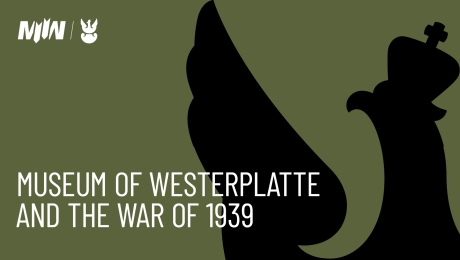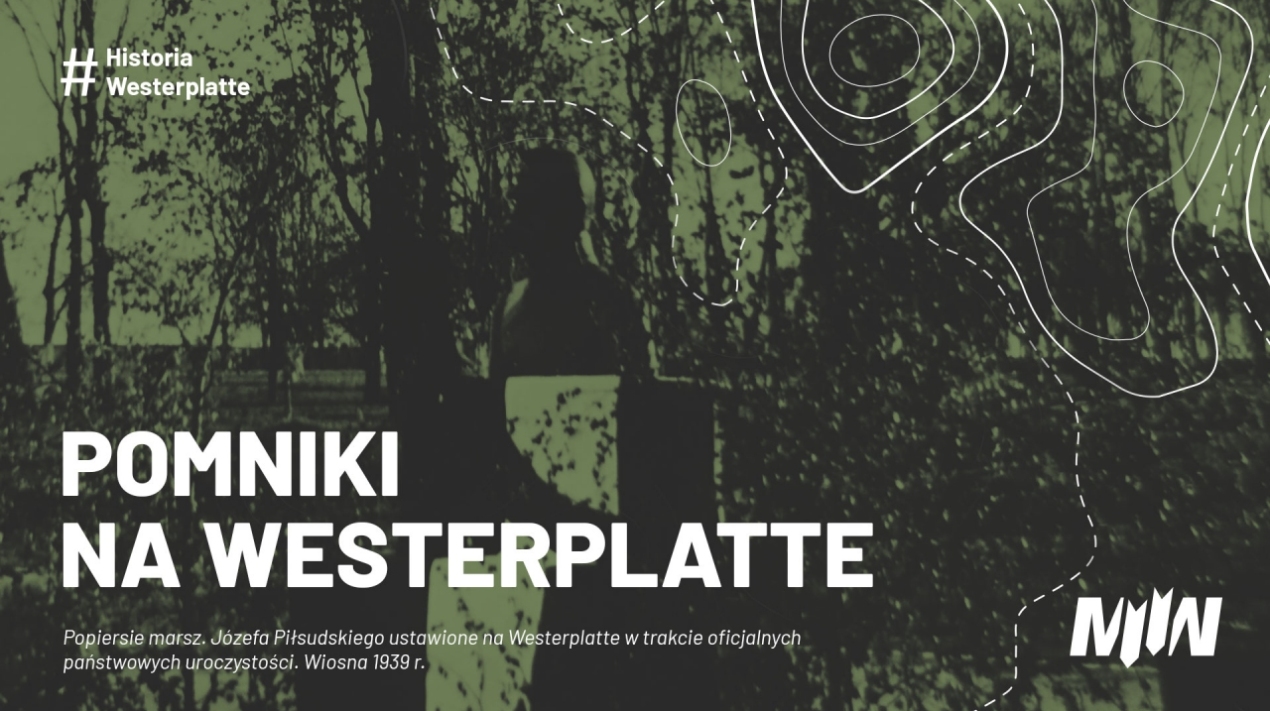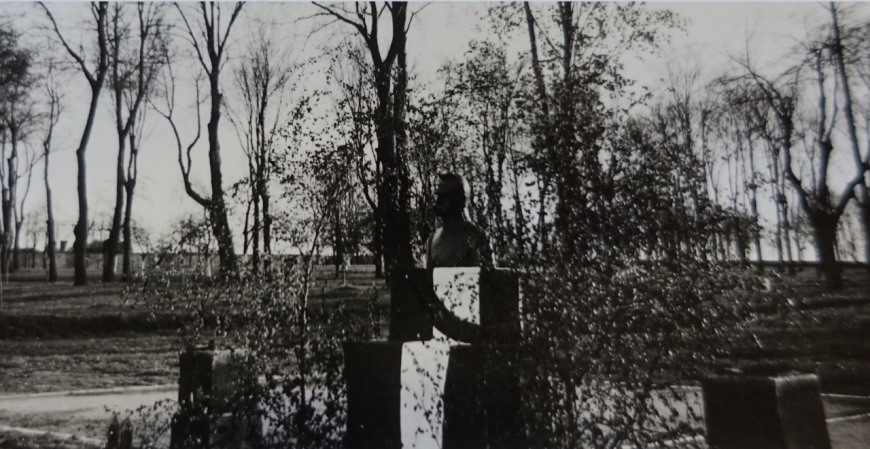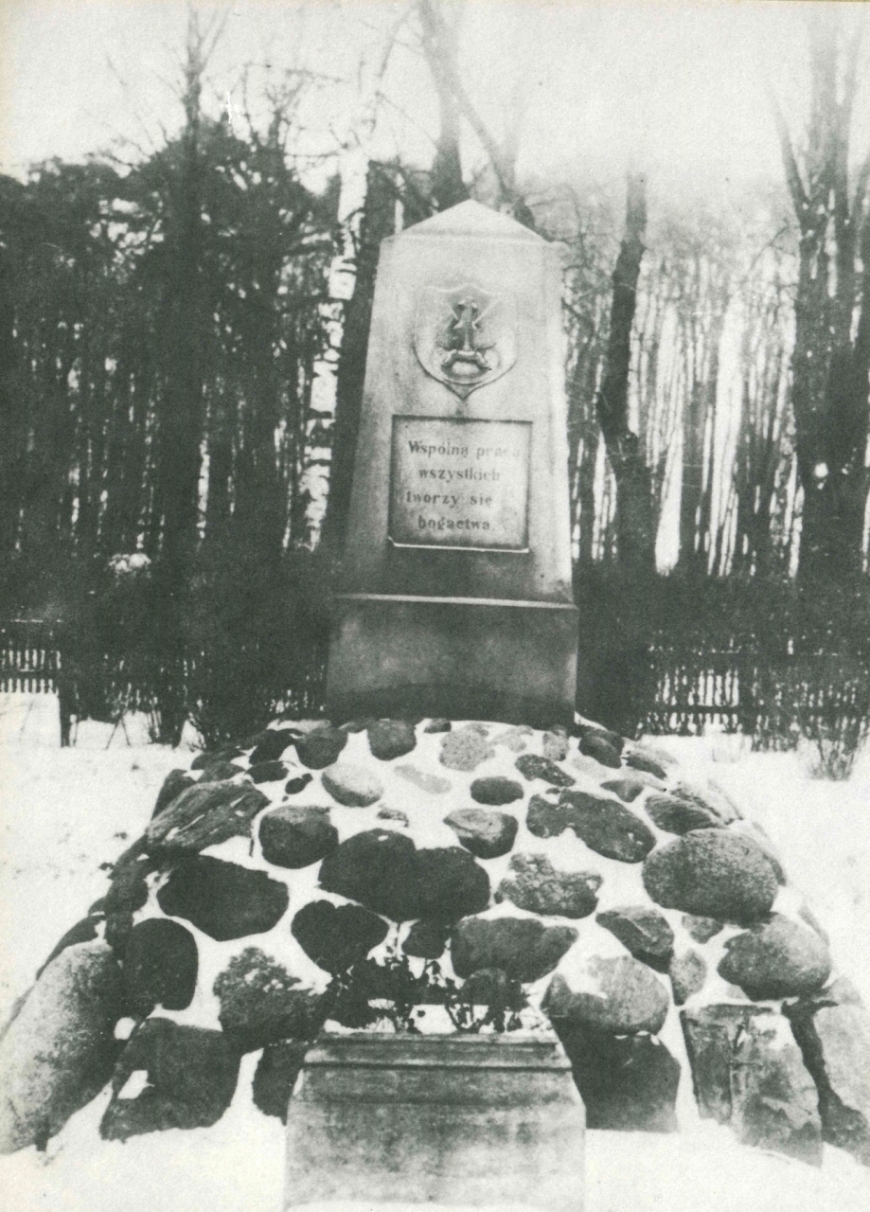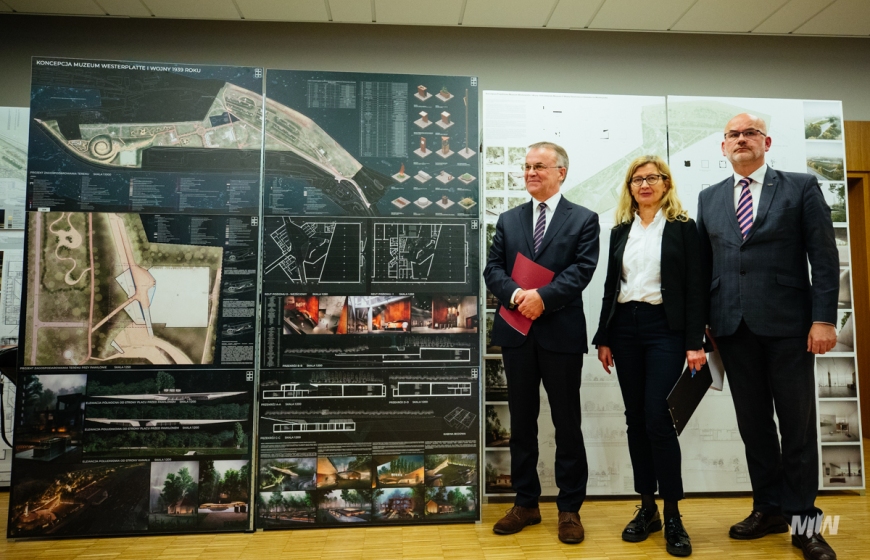#WesterplatteHistory - MONUMENTS AT WESTERPLATTE
For several decades, Westerplatte has been associated with the Monument to the Defenders of the Coast, unveiled ceremoniously in October 1966. Since the late sixties, its silhouette has become one of the most frequently used symbols of this place in various photographs, postcards, and other souvenirs. The upcoming Westerplatte museum aims to reverse this trend and emphasize the authentic dimension of this place, which was a battleground for Polish soldiers in 1939. The Monument to History at Westerplatte will eventually be restored to its former glory. In this text, we would like to show that there have been more monuments and memorials over the years, and their history is not as well-known as the example of the largest monument mentioned here. We invite you to familiarize yourself with the content of the article.
One of the most characteristic monuments located on the Military Transit Depot (MTD) at Westerplatte was an obelisk erected in 1928, symbolizing 10 years of Polish independence. Unveiled during anniversary celebrations in November 1928, the object was adorned with a stylized relief of an eagle holding the so-called Amazon Shield in its talons. This was an unequivocal reference to the typical attribute associated with the Polish Army, which was also worn on military caps. Below the relief, in a specially prepared place, the inscription read: "Wspólną pracą wszystkich tworzy się bogactwa" (Wealth is created by the joint efforts of all). This quote was a slightly modified and adapted version of a sentence from the writings of Father Stanisław Staszic. The obelisk was placed on a small mound with a stone surface in the main parade square in the central part of the peninsula, near Brzozowa Avenue, not far from the eastern wing of the so-called old barracks. We currently do not have photographs of the other side of the monument, but it can be assumed that there was also some symbol defining the reason for its existence – namely, the celebration of the 10th anniversary of Poland regaining independence. Its location was not accidental. Since the monument was located right next to the parade square and near one of the main roads leading through the peninsula, practically all delegations and visitors had to pass by it. In preserved documents, we find information that during the ceremony prepared for the Westerplatte garrison, including non-commissioned officers, privates, and individuals from the Military Department of the General Commissioner of the Republic of Poland in the Free City of Gdańsk, Captain Franciszek Krukierek – a representative of the Military Department – was to deliver his address after the religious service. Although only one photo showing the monument has survived, and we indirectly identify this object in a series of several different angled aerial photographs from the era, we have no other information about it. It must have become a permanent part of the Depot's infrastructure, and for subsequent changes, it was already a given. Interestingly, thanks to preserved photos taken after the surrender, we can see that it survived the war turmoil and was only dismantled during cleanup and demolition work at the turn of 1939 and 1940. At that time, Polish prisoners, under German coercion, erased most of the traces of the Polish Depot.
The second temporarily placed element bearing the characteristics of a monument was a bust of Marshal Józef Piłsudski, which must have been placed on the Depot's premises most likely after 1935. It was specially exhibited outside a building during all ceremonies related to the Marshal. As with the previous monument, we have only one known photograph showing this element placed on the sports field near the barracks. In written sources, we find orders mandating preparations for the commemoration of the anniversaries of the Marshal's death. In May 1939, this ceremony was a two-day event combined with a Mass. The bust displayed then probably became a war trophy or was destroyed, as no information about it has been found to date. Thus, we do not know exactly what happened to the sculpture after the Depot's surrender.
On maps from 1934, a small outline is marked at the railway gate leading to the MTD area. According to some researchers, this was the location of another monument. However, this space was within the railway area and could not be visited or even noticed by most people for two reasons. Firstly, due to the very strict requirements for those in the railway zone, which was accessible only to authorized personnel. Secondly, a large part of the garrison and guests arrived at the Depot by sea or by crossing the road gate, but not the railway gate! Therefore, it is safe to assume that the outline did not represent a monument. Most likely, it was a guard booth or a small structure related to railway traffic control.
In this short article, we have presented two of the most significant monuments that were for certain located on the MTD premises. In conclusion, it is important to note that there were more sculptures and monuments on Westerplatte, funded even before the Depot began operating. Archaeological research conducted so far has confirmed this thesis in the form of fragments and relics of a rich material culture buried in the ground. However, they require further detailed research.
It is worth noting that currently, in addition to the Monument to the Defenders of the Coast on the peninsula, there are several other commemorative forms related to Westerplatte. These include sculptural elements used in the former Westerplatte Cemetery monument, a monument commemorating the Mass celebrated by Pope John Paul II in 1987, and the latest pedestal emphasizing the importance of this place as a Monument to History. Interestingly, this last element appeared relatively recently on the battlefield, although the vast majority of other Monuments to History already have their corresponding symbols assigned to them. Thanks to this monument, the significance of this consecrated ground of Polish soldiers can be appropriately emphasized.











